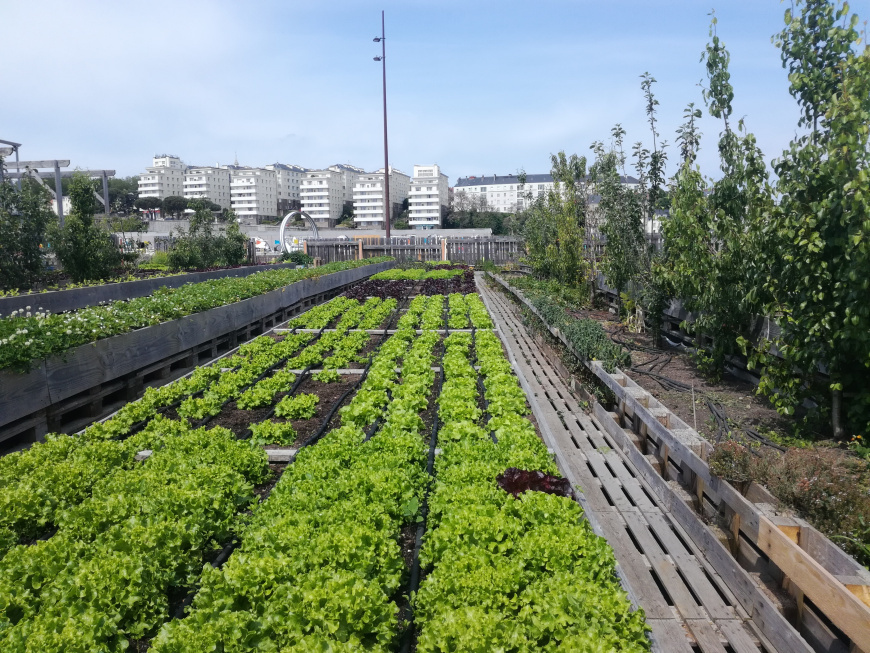The Only Guide to City Blooming
Table of ContentsThe Main Principles Of City Blooming Unknown Facts About City BloomingWhat Does City Blooming Do?All About City BloomingThe Best Guide To City Blooming
Interested in expanding food for sale in the City of Chicago? Below is a checklist of often asked questions pertaining to the rules and laws that cultivators should take into consideration when preparing a city agriculture job.
The zoning amendment does not change any kind of other codes handling composting, building authorizations, purchasing or leasing City owned residential or commercial property, business licenses or environmental contamination. There are existing codes that manage these issues and they stay in full impact and might apply to your task. Neighborhood gardens are generally possessed or handled by public entities, public organizations or community-based companies and preserved by volunteers.
Urban farms grow food that is meant to be sold, either on a not-for-profit or for-profit basis. Due to their business function, city farms need a service permit. Yes. An area yard is allowed to sell excess create that was expanded on website if the sales are accessory or subservient to the garden's main objective defined over.
The Of City Blooming
The amount of garden compost material can not exceed 25 cubic backyards at any kind of provided time according to the requirements in 7-28-715 of the City's Municipal Code. Since the dirt at the majority of brand-new yard sites needs modifying, garden compost, dirt, timber chips, or other materials can be acquired to build or improve the expanding space.

If a structure license is needed then the hoophouse will certainly be taken into consideration an accessory structure. You can discover more regarding the building permit needs by getting in touch with the Department of Structures. The 25,000-square-foot size limit is planned to avoid a single area garden from dominating a given block or diminishing the block's existing domestic or business personality.
The limitation does not use to yards located in Public Open Area (POS) areas. Can there be more than one community yard that is 25,000 square feet on a solitary block? Fencing is not required, nonetheless, yards that have large auto parking locations may be called for to install fencing or various other landscape design functions.
Top Guidelines Of City Blooming
B1 & B2 districts call for that all commercial use tasks be carried out indoors. Is secure fencing needed for metropolitan farms? Fencings may be required, along with landscaping and testing, for specific vehicle parking areas and outdoor job or storage areas depending on area and the specific task taking area.
Urban ranches need structure permits and zoning approvals prior to construction (sustainable gardening). Other kinds of city evaluation may be called for depending on details structures, tasks, dimension, landscaping, licensing, public heath and stormwater management concerns.
The Department of Organization Affairs and Customer Protection can aid establish the details type of organization certificate that's required. Off street car park is needed for many commercial jobs in Chicago. The called for number of vehicle parking rooms is based on the number of staff members working on site and not the square video footage of the growing space.
Not known Facts About City Blooming

A city farm can sell compost product produced on website, however, the operation must conform with the policies in 7-28-715 of the Chicago Municipal Code. Aquaponic systems are permitted indoors on urban farms in many zoning districts.
As much as five hives or nests of honey bees might be kept as an accessory use. However, beekeepers should register with the Illinois Division of Farming. For more details concerning the recommended zoning change you might call the Division of Real Estate and Economic Advancement, Bureau of Preparation and Zoning at 312.744.8563.
Farming in cities and city locations A city ranch in Chicago. Urban agriculture refers to various practices of cultivating. https://www.huntingnet.com/forum/members/cityblooming.html, processing, and distributing food in city areas. The term likewise puts on the area tasks of pet husbandry, tank farming, beekeeping, and horticulture in a city context. Urban agriculture is differentiated from peri-urban agriculture, which occurs in rural areas at the edge of suburban areas.
Getting The City Blooming To Work
It can involve a motion of natural growers, "foodies" and "locavores", who look for to form social networks based on a common values of nature and neighborhood holism. These networks can establish by way of formal institutional support, becoming incorporated right into regional town as a "shift town" activity for lasting city advancement.
In either situation, the a lot more direct access to fresh vegetable, fruit, and meat products that may be become aware via urban farming can enhance food safety and see page food safety and security while decreasing food miles, causing lower greenhouse gas discharges, thus adding to environment adjustment mitigation. A few of the initial proof of city farming originates from Mesopotamia.